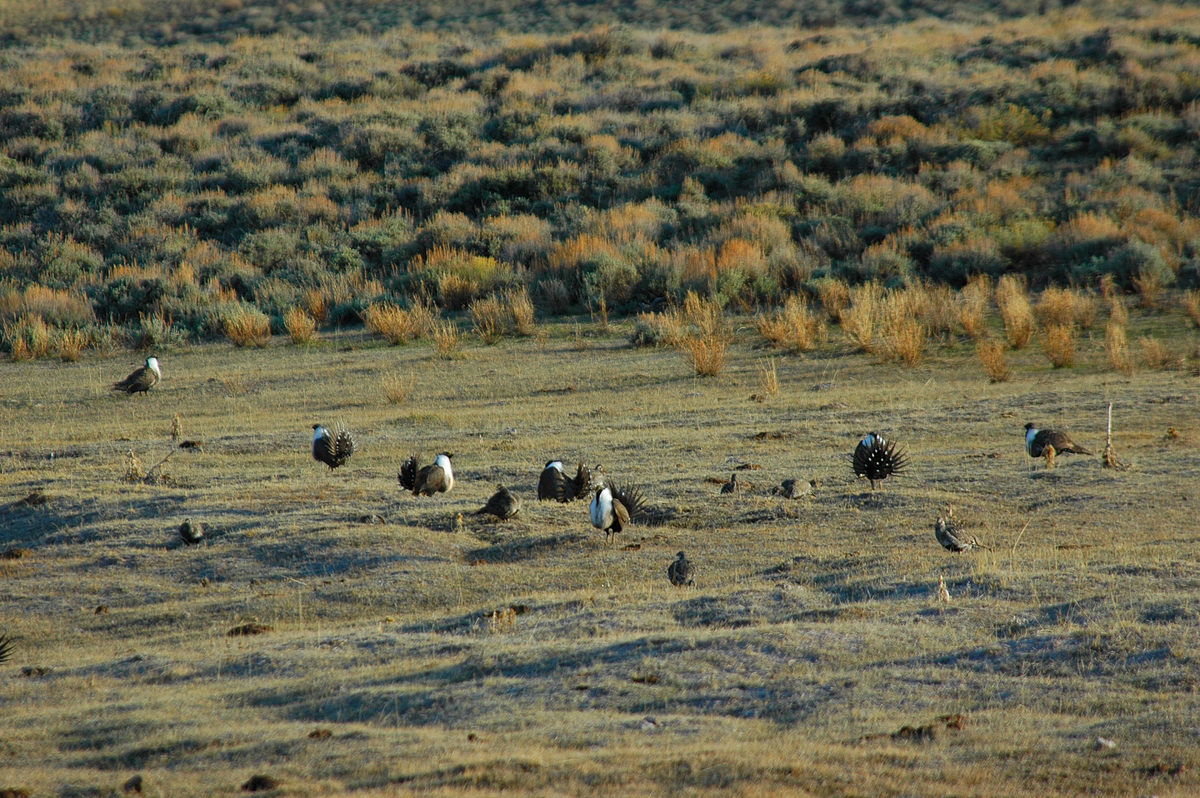Below is a news release from the University of Wyoming. The Rocky Mountain Elk Foundation agrees with researchers and wildlife managers that an overabundance of wild horses and burros harms rangeland and wildlife habitat.
When wild horse populations are allowed to grow beyond numbers set by the Bureau of Land Management (BLM), sage grouse numbers suffer, according to newly published research led by University of Wyoming scientists.
After 15 years of study involving more than 1,000 sage grouse in central Wyoming, the researchers concluded that managing free-roaming horses at or below the BLM’s maximum appropriate management levels within herd management areas would be highly beneficial to sage grouse populations.
“Over the last 20 years, free-roaming horse numbers have increased to more than three times the targeted goal across BLM lands, and this increase is one of the causes of sage grouse population declines,” says UW Department of Ecosystem Science and Management Professor Jeff Beck, who led the research team. “Our research found that increasing free-roaming horse numbers are harmful for sage grouse by adversely affecting multiple vital life stages. This is particularly important when considering the burgeoning number of free-roaming horses on public lands where sage grouse occur and the heightened conservation status of sage grouse populations, which are declining range-wide.”
The research is detailed in a paper published in the Journal of Wildlife Management. Other members of the research team are current or former UW scientists or graduate students Kurt Smith, Christopher Kirol, Caitlyn Wanner, Jacob Hennig and Derek Scasta. Scientists from the U.S. Geological Survey, the U.S. Fish and Wildlife Service, Oregon State University and the George Miksch Sutton Avian Research Center in Bartlesville, Okla., also were involved.
Free-roaming horses on BLM and U.S. Forest Service lands in the West are protected under the Wild and Free-Roaming Horses and Burros Act of 1971. Management on BLM lands is based upon a maximum appropriate management level of 26,785 horses and burros combined. Local management occurs within 177 BLM herd management areas, each of which has an established maximum appropriate management level. However, as of March 2023, BLM lands were occupied by nearly 83,000 free-roaming horses and burros, whose annual growth rates can average 20 percent per year. Over 80 percent of the BLM’s horse management areas have populations exceeding their appropriate management levels.
Grazing by free-roaming horses can reduce shrub density, vegetation cover and abundance of key forbs used by sage grouse, the researchers say. Horse grazing also adversely impacts riparian areas and reduces plant understory and the heights of perennial grasses, while promoting invasive plants, such as cheatgrass, which also negatively influence sage grouse across different life stages.
About 12 percent of the West’s sage grouse habitat is managed for free-roaming horses within BLM herd management areas. In Wyoming, sage grouse co-occur in about 99 percent of BLM herd management areas — amounting to 11 percent of the state’s total sage grouse habitat.
The newly published research focused on sage grouse in Wyoming’s Atlantic Rim, Red Desert, Jeffrey City and Stewart Creek areas. The scientists captured and monitored 995 adult female grouse, and monitored 1,075 nests, 372 broods and 136 juveniles. The researchers also looked at the numbers of free-roaming horses in those areas. For comparison, grouse were captured and monitored in areas outside of BLM horse management areas as well.
“There was strong or moderate evidence that overabundant free-roaming horses negatively affected nest, early and late brood, and juvenile (grouse) survival,” the researchers wrote, noting relative survival declines ranging from 8.1 percent to 18.3 percent.
Notably, survival rates for adult female sage grouse in areas where horses didn’t exceed appropriate management levels were similar to survival rates in areas outside horse management areas, where exposure to free-roaming horses was assumed to be zero.
“Our research identified the conservation value of maintaining free-roaming horse numbers at low levels not exceeding maximum appropriate management levels, which is a key factor in sage grouse conservation that appropriate rangeland management can rectify to reduce further declines of this imperiled species,” the scientists wrote. “Our study helps validate the process of setting appropriate management levels, which is based on a landscape’s capacity to support free-roaming equids after accounting for vegetation and soil characteristics, wildlife populations, environmental quality and other grazing animals, including cattle.”
The researchers wrote that they recognize the difficulty of managing free-roaming horses due to public sentiment and litigation against horse removal. Beck and other researchers previously argued that, because contrasting societal views have created an approach that simultaneously manages horses without definition on the range as wildlife, livestock or pets, current federal government horse management programs face significant challenges in managing horses at appropriate numbers that prevent adverse impacts to wildlife populations.
However, the newly published research — showing that overabundance of one iconic species is harming another potentially imperiled iconic species — helps inform action, the scientists say.
“Managing free-roaming horses at appropriate levels would be highly beneficial to sage grouse populations — and other species that rely on functioning sagebrush ecosystems,” the researchers concluded.
(Photo credit: Rocky Mountain Elk Foundation)
